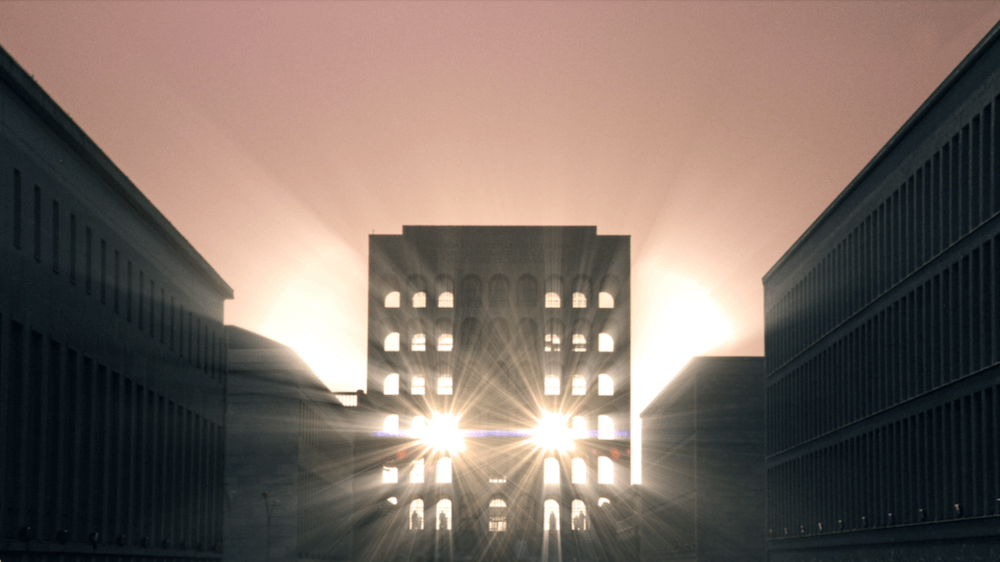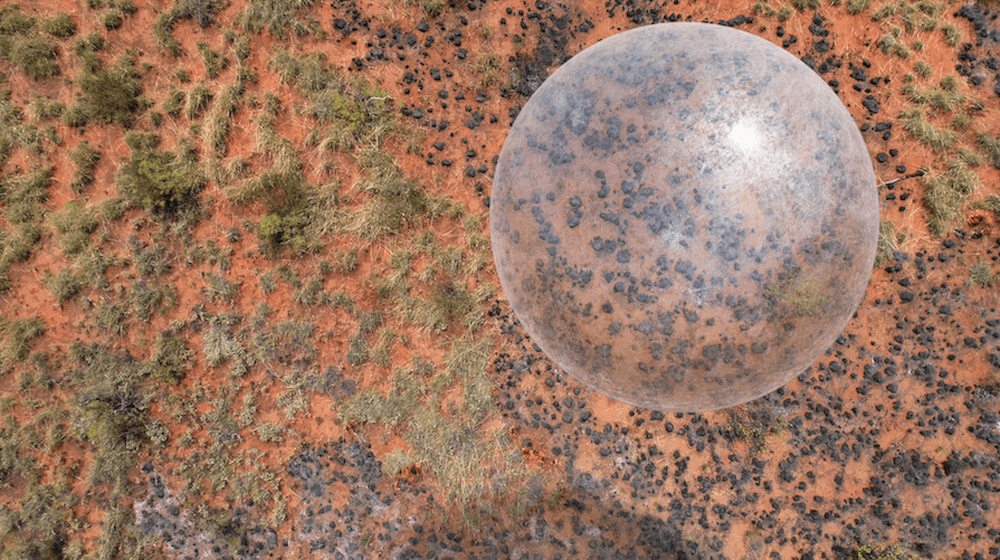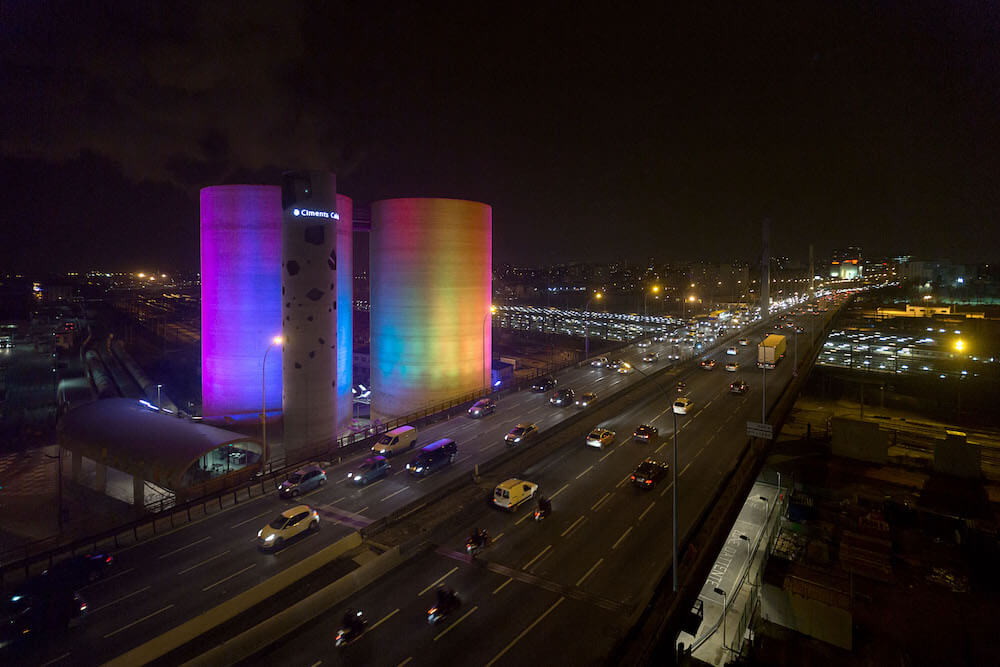Laurent Grasso: On the Limits Between Fiction and Reality
Laurent Grasso
LM: What are you presenting at Perrotin Paris this October?
LG: As so often in my practice, I present a group of works with a film project at their core. Generally, I create a film involving people from the cinema industry and try to produce a strange artistic object. What I like about the art world is that I can use this cinema technique without creating a special format; the practice is completely free. I try to involve different people; for example, I asked Nicolas Godin – one of the two founders of the band Air – to compose the music. The film “Orchid Island” is grey and black and white. A strange object – a black rectangle – flies above a virgin landscape. It is not exactly clear what its purpose is and where it comes from. My projects often evoke invisible stories made visible by the creation of strange phenomena. A few years ago, I made a film called “Soleil Double”. It was shot in Italy, in the EUR district in Rome (Esposizione Universale di Roma). The viewer sees the totalitarian architecture of EUR but with two suns instead of one. The paranormal phenomenon evokes a feeling of concern and fascination. For this exhibition and new film, I present paintings covered by an opaque surface. The paintings appear as black minimalist sculptures, but the more you penetrate the space, the more you understand that a painting lies behind the filter of the cloudy material.

LM: So, these are correlated to the rectangle in the video?
LG: Yes, they create the impression that you see reality through this rectangle and its material. There are six large, dark rectangles in the room of the video installation. They are very ambiguous because you don’t initially understand that there is something to understand and that there is a picture behind this dark, opacifying filter. Slowly, as your eyes begin to adapt, you understand that there is something behind it. These paintings are entirely based on historical paintings connected to the history of exploration and colonialism. This idea is that some painters and artists took part in the first explorations of different countries and were in charge of depicting what they discovered. What I found really interesting is that they painted what they saw but from a European point of view. These paintings and this history of painting are fascinating because they are based on Western notions and points of view, on something that the local people didn’t necessarily see. They didn’t perceive nature and the landscape as we do, so there is an error or missing viewpoint in this practice. The film is shot in Taiwan, a place where a lot of things are going on. In my work, there is never just one story but different parallel stories. There are stories of explorations, but also the place where it is shot, Taiwan, where you have many geopolitical parameters. “Orchid Island” is the name of one of the places that we see in the film. It’s a kind of strange balance between beauty and virgin nature. Titles are part of my work. For me, they are works of art mixing poetry, sounds, phonetics, and concepts. “Orchid Island” is reminiscent of the first sketches of colonial Western exploration and the idealisation of nature. Today, it is also a place where the Taiwanese government deposits radioactive waste.
LM: You work across several media and layers and seem to play with the viewer’s brain at different levels. Could you expand on the interconnection between the works in an exhibition space, the relation to the space itself, and the creation of sensory experience in general?
LG: Generally, I try to create a certain light that plays with the architecture. I try not to merely hang my artwork but to create a space, an environment, an installation, rather than just showing my last works. For me, the artwork is the exhibition as a whole. Theoretically and conceptually, physically and visually, my work is about what you see and what you don’t see, what you understand, what you don’t understand, what I give, what I don’t give. So, it’s also about vision. For example, as I said before, with this black material that I put on the surface of the paintings, you do not entirely understand the painting; what you see is something slowly appearing. It’s the same for the general installation, and it’s also the same with the content of my artwork and my practice. The installation takes us in this direction: to find the right balance between what you see and what you don’t see. I play on the limits between fiction and reality.
LM: In the past, you have created works that generated different frequencies. Could you tell me more about this layer of your work and the role of the invisible?
LG: Yes, I used frequencies as an artistic material for several other exhibitions. For me, it is a way to fill the space with something invisible but real. I also deal with things we don’t know about, which is part of the wider question of the visible in my work. I try to reveal past histories, feelings, energies, and the object of certain beliefs. For example, in the film “OttO”, I try to reveal why certain sites have been chosen as sacred. Similarly, I shot a film in the French President’s office, “Élysée”. I had access to the Salon Doré, the most powerful room in France. I try to use the camera like a magical tool that can see behind the surface of objects. Of course, it is a fiction, but it’s a way of investigating the charge of memories contained in objects and letting them speak. The question of the invisible is always changing; it may be the invisible with regard to frequencies, the memories of a place, or certain beliefs that I’ve studied and that interest me, including contemporary mythologies or certain abnormal practices.

LM: Your work tends towards a very sensorial aesthetic, yet a lot of hefty research goes into each of your projects; how important to you is it that your viewers can access that?
LG: The research doesn’t have to be accessible to the viewer; if an artist’s practice requires a lot of research, the work’s reception doesn’t rely on this material. What we should do as artists, which I think is important and sometimes missing, is to provide the viewer with an experience and a real moment of something new. When you visit an exhibition and don’t really understand what is happening, you get a feeling of curiosity and a sense that something is going on that excites you and makes you want to find out more. Through the press interviews, the texts I provide, or the making-of of my films and my catalogues, I give access to the background of my work. But I am most interested in the initial stage, the viewer’s virgin encounter with the work. This point is very tricky because if you say nothing, you look like you don’t know what you are doing, but if you say too much and give too much, you don’t allow for the purity of this initial vision or encounter.
LM: In your book “Soleil Double”, there’s a chapter about machines. Could you expand on this preocupation and / or allure?
LG: Today, we are entering a new reality where the human, digital, mineral, and animal are increasingly put on the same level, and this distinction between humans and the rest of the world is erased. We are starting to perceive that what is around us is alive, thinking, and feeling. Human beings are no longer the centre, which is really interesting; I try to give the machine an existence and interiority. For example, in my film, the camera is not my eye; it’s something different. What I try to do is to see the world with a non-human eye. The camera becomes an entity of its own, with autonomy and with its own logic. I see the machine as a metaphor for what we see today and what we cannot understand because the world is so complex. Science is so sophisticated today that we, as humans, are often confronted with objects, constructions, and tools that we cannot really understand. What I like about machines and my artwork is that they give the impression of having a function. I like this idea that an artwork is not just a decorative object or the expression of what you think or feel as an artist. What I like is when the object has a certain aura or power, when objects are activated by a belief, as in rituals, or by a function, like scientific objects.
LM: What was the concept behind the public installation “SolarWind” in Paris, the collaboration with the National Center for Space Studies, and the idea of the meteorology of space?
LG: I was interested in the concept of the meteorology of space because, at a time when we are all concerned about climate change, it was interesting for me to extend our vision to other influences from space. We are also exposed to magnetic storms from the sun, waves and solar storms, which I found really interesting. I was in contact with different research programs, and they provided data about the sun’s activities and other meteorological events, including meteorites, eclipses, etc. So, I created an algorithm to transform this information into colour, light, and animation. The project functions like a barometer of the meteorology of space in the 13th arrondissement in Paris.

LM: You live and work in Paris, can you provide our readers with some insider recommendations?
LG: I spend most of my time in my studio in the 14th arrondissement. I often walk through the Montparnasse Cemetery, which is in my neighborhood. This is a very interesting place to visit because the graves are artworks in themselves and much more than just graves; many artists and writers are buried there, including Brâncuşi and Simone de Beauvoir, to name but a few. At the moment, the area around the Palais-Royal is very interesting. It’s really active, and there are a lot of galleries around the Jardin du PalaisRoyal. There is a very interesting restaurant called Chez Georges that I would recommend. I studied at the Beaux-Arts de Paris in the 6th arrondissement; this is the first place I discovered in Paris. Le Beaux-Arts is a very beautiful hidden place. Another is La Maison de l’Amérique Latine on Boulevard Saint-Germain, with a restaurant and a beautiful garden inside. I really like the Musée Rodin as well. What’s really special about Paris is this feeling of opening a door and finding yourself somewhere completely different. My secret dream is to have a map of my artworks in the city; at Porte d’Ivry, you can see the “SolarWind” installation at night. What is nice is that it’s visible from the ring road, from your car, and also when you land at Paris Orly Airport. At Hôtel de Crillon, on the first floor, I have two major works they commissioned for their renovation – two large Studies into the Past paintings at Salon des Batailles. Next door at Place Vendôme, I have a major sculpture at the entrance of Louis Vuitton. It is a copper Anechoic Wall commissioned by Peter Marino. In the 6th arrondissement, at the Institut de France on Rue Mazarine, there is a nocturnal work composed of ten onyx sculptures that form a constellation of illuminated points. I am currently working on a piece for the new Châtillon-Montrouge train station, which will be inaugurated next year. It has a massive ceiling of 800 square meters, for which I will print a historic sky painting on a metal surface.




